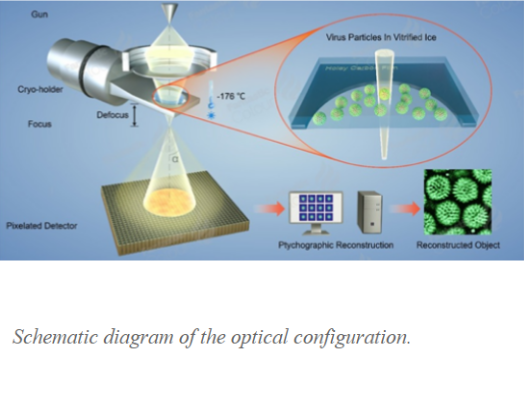Time Resolved Ptychography
Time Resolved Ptychography
The Franklin is developing a new double aberration corrected column (named Ruska), which will open up new imaging modes not available in conventional cryo-EM instruments. This instrument will enable structural studies of smaller molecules in native environments. By using faster direct-electron detectors and information that can be mined from full 4D data sets, we plan to explore new directions in cryo and liquid cell microscopy.

The increased phase sensitivity of ptychography will enable structural studies of smaller molecules at lower doses. The electron beam convergence angle enables collection of information at targeted spatial frequencies for data that can reveal large and small-scale features of samples. This is essential to understand the overall picture of biological materials studied using a minimum dose of radiation. For single particle studies, the phases retrieved from ptychography produce higher contrast than imaging and require fewer particles for single-particle 3D reconstruction
Project team members at The Franklin:
- Principal scientist: Judy Kim
- Chen Huang
- Emanuela Liberti